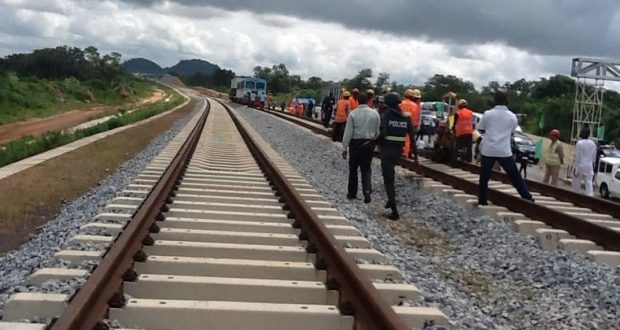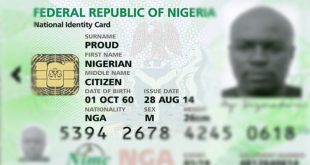Persistent as ever, Transportation Minister, Rotimi Amaechi, is pressing ahead with an ambitious national railway construction programme that comes with a hefty $45 billion price tag. This is fine, since Nigeria’s current 3,500 kilometres of track is grossly inadequate, leaves the economy hobbled and traps the country in under-development. But the minister and President Muhammadu Buhari miss the point by their go-it-alone mindset, featuring multiple multibillion dollar contracts and colossal loans for rail and other projects that the government has neither the resources nor the wherewithal to repay. There is an urgent need for a rethink.
To achieve the goal of providing the needed rail infrastructure, especially for goods haulage, faster and more efficiently, everything should be done to attract foreign direct investment and local investors for rail and other major infrastructure projects. Amaechi’s doubts that private capital would be readily available to lay tracks, the fundamental part of rail infrastructure, is misplaced: in a developing country like ours, creative pro-business policies will lure FDI. Policy, the strong political will and consistency in implementation are the must-have ingredients that successive Nigerian governments have not been able to muster over the decades.
Amaechi, in a recent newspaper interview, laid out government’s grand ambitions and part of the costs: Lagos-Kano is to cost $8.7 billion; Abuja-Itakpe-Warri and its seaport, $3.9 billion; Lagos-Ibadan, $1.6 billion; Kaduna-Abuja, $1 billion; Kano-Kaduna, $3.1 billion; among others. He said, “…we need between $35 billion and $45 billion to do Lagos to Kano, Port Harcourt to Maiduguri; Lagos to Calabar, and Abuja to Warri. Once you do these, you’ve covered the country and solved the problem of transportation to a large extent.”
The urgent need for massive railway construction is obvious: until the recent extensions of the last few years, the last major rail project undertaken in the country was the 640-kilometre Kano-Maiduguri line completed in 1964 that brought the total track stock to 3,505 km. It stands at 3,528 km today by International Union of Railways figures. Our competitors in the BRICS club to which we aspire, have much more. Brazil’s 29,303 km of tracks carry over 20 per cent of all cargoes within the country; India’s 121,407 km is the world’s fourth largest network, carrying over 1.10 billion tonnes of freight annually, 8.1 billion passengers and 49 per cent of its routes run on electricity-powered engines; Russia and China have the world’s second and third largest networks respectively, while South Africa’s 20,000 km of track is 50 per cent in excess of current demand, says the International Council on Monuments and Sites.
The enormity of the investment required means the government should aggressively seek international private capital. The World Bank has recommended and reported increased private sector investment in rail infrastructure. Its Private Participation in Infrastructure Database revealed that the 39 per cent of private investment in transportation in 2017 was powered by a surge in investments in railways in Asia, including a $6.8 billion high speed rail project in China, another HSR project in Indonesia and a $3.1 billion monorail in Thailand.
Amaechi, however, deprecates private capital investment in tracks, which he rightly asserted, are capital intensive. “I challenge anyone to show me anywhere in the world where anybody has seen a private investor in the railway(s),” arguing that private capital goes into operations and not tracks. This is not the full story. Yes, a majority of tracks worldwide are state-owned, with private investment heavier in rolling stocks (engines, coaches) and route. Tracks, says the Railway Technical, an online resource, are the basic part of the rail infrastructure, the fixed guidance system and steering base for the trains.
But this is because most governments had consistently invested in rail tracks over the years; many had sizeable track mileage that was being inefficiently run: their problem therefore was more of inefficient management of existing infrastructure than the chronic infrastructure deficit in Nigeria: privatisations, concessions and liberalisation that have gained much traction since the 1980s, thrusting private operators to the fore in many countries. About 36 per cent of South Africa’s tracks are not even used, according to ICOMS. Second and most importantly, Nigeria offers a unique opportunity for privately built railways for freight as once offered by GE that wanted to build a Lagos-Kano fast rail, and by the O’odua Group for a Lagos-Ibadan rail link. Public-Private Partnership also offers immense opportunities that this government has inserted into the 25-year rail plan, but is not pursuing with the same vigour as it pursues Chinese loans! Private capital, helped by state subsidies, actually built substantial rail infrastructure in North and South America. Private capital is also making a difference in Europe’s rail system, while China and India are encouraging private concerns.
The way to go is to open up by fine-tuning and implementing the liberalising rail reform programme drawn up by the Nasir el-Rufai-led Bureau of Public Enterprises and swiftly pushing for the repeal of the restrictive Railway Act of 1955. Buhari and Amaechi should muster the required political will and open their minds to alternative views and new thinking: our situation is dire; the government should woo and concession existing rail lines to the best global rail operators. It should develop and implement public private partnership approaches to attract private investment and expertise in core capabilities. This will provide additional resource mobilisation to the sector. In partnership with the states, it should mark out national rail routes and offer them to international investors through a targeted bidding for investment in tracks, through wholly private or PPP deals, within a robust regulatory framework that protects the public and investors alike. Government going it alone has resulted in abandoned projects, project reversals and gross under-funding. This is wrong.
Adopting new models, government can substantially free itself of the financing burden of allocations and loans. Investors will concentrate on viable routes for freight and passengers to recoup their investments and make profit, while the government is now free to invest much lower sums in less profitable hinterland routes to meet the demands of social equity. Today’s template allows politics to take precedence over economics, drains the treasury of scarce resources and entraps the country in debt.
Source- punch Editorial Board
 South Daily
South Daily





